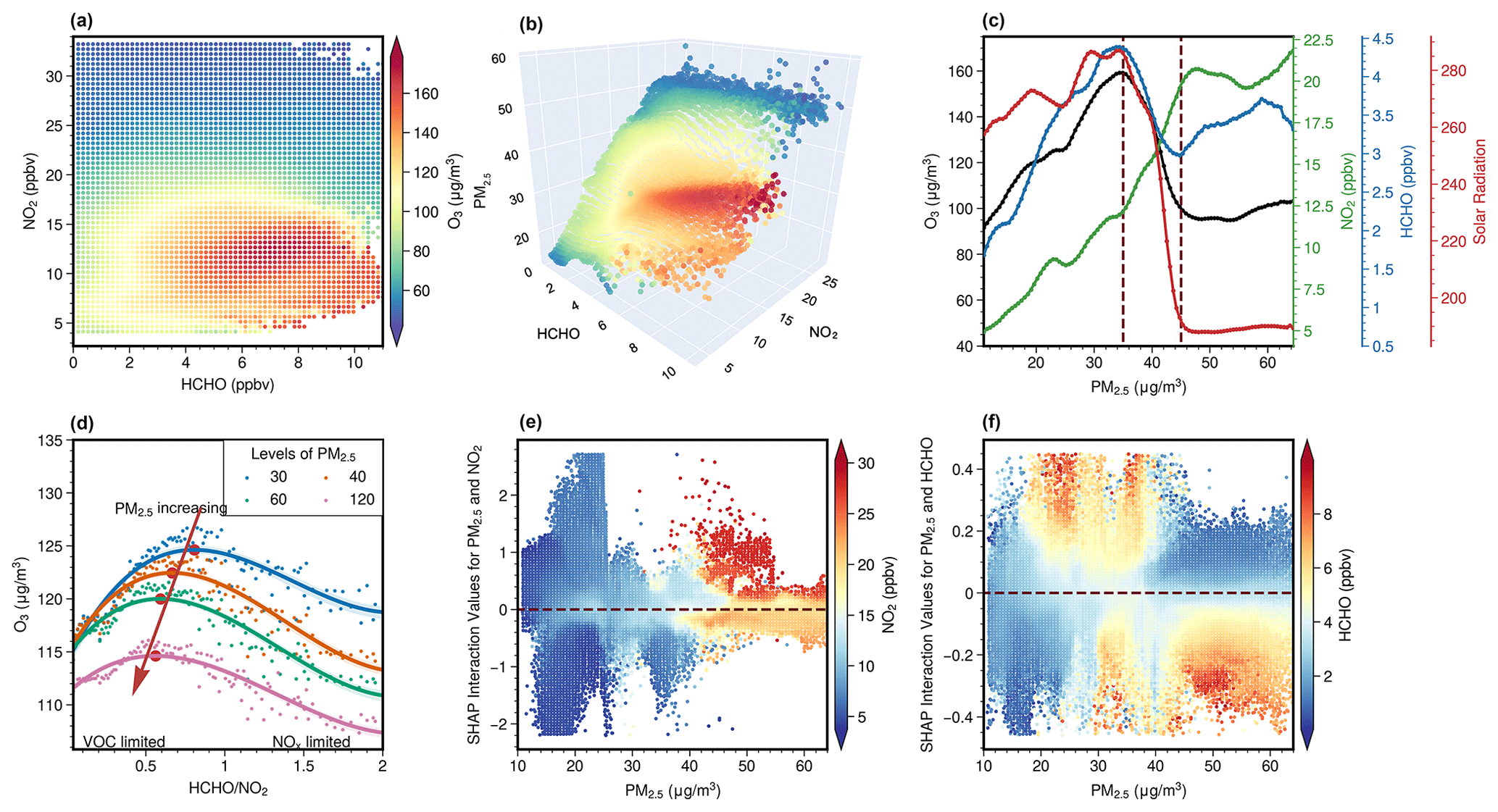张玉强
![]()
开通时间:..
最后更新时间:..
Abstract:
Narrowing surface ozone disparities between urban and nonurban areas escalate health risks in densely populated urban zones. A comprehensive understanding of the impact of ozone photochemistry on this transition remains constrained by current knowledge of aerosol effects and the availability of surface monitoring. Here we reconstructed spatiotemporal gapless air quality concentrations using a novel transformer deep learning (DL) framework capable of perceiving spatiotemporal dynamics to analyze ozone urban–nonurban differences. Subsequently, the photochemical effect on these discrepancies was analyzed by elucidating shifts in ozone regimes inferred from an interpretable machine learning method. The evaluations of the model exhibited an average out-of-sample cross-validation coefficient of determination of 0.96, 0.92, and 0.95 for ozone, nitrogen dioxide, and fine particulate matter (PM2.5), respectively. The ozone sensitivity in nonurban areas, dominated by a nitrogen-oxide-limited (NOx-limited) regime, was observed to shift towards increased sensitivity to volatile organic compounds (VOCs) when extended to urban areas. A third “aerosol-inhibited” regime was identified in the Jiaodong Peninsula, where the uptake of hydroperoxyl radicals onto aerosols suppressed ozone production under low NOx levels during summertime. The reduction of PM2.5 could increase the sensitivity of ozone to VOCs, necessitating more stringent VOC emission abatement for urban ozone mitigation. In 2020, urban ozone levels in Shandong surpassed those in nonurban areas, primarily due to a more pronounced decrease in the latter resulting from stronger aerosol suppression effects and less reduction in PM2.5. This case study demonstrates the critical need for advanced spatially resolved models and interpretable analysis in tackling ozone pollution challenges.

Figure 7(a) O3 concentrations as a function of surface HCHO and NO2. (b) O3 concentrations as a function of surface HCHO, NO2, and PM2.5. Both (a) and (b) utilize a shared color bar to indicate O3 concentrations, enhancing comparability. (c) Relationship between O3, and NO2, HCHO, and surface shortwave radiation flux. The paired O3, HCHO, NO2, and solar radiation are divided into 100 bins based on PM2.5, and then the averaged concentrations (y axis) are calculated for each PM2.5 bin (x axis). (d) Changes in the –O3 relationship in response to changing PM2.5 by the XGBoost model. The solid lines are fitted with fourth-order polynomial curves, and the shading indicates 95 % confidence intervals. (e–f) The interaction between SHAP values reveal an interesting hidden relationship between pairwise variables (PM2.5, NO2, HCHO) and O3.
The paper link is:
Diagnosing ozone–NOx–VOC–aerosol sensitivity and uncovering causes of urban–nonurban discrepancies in Shandong, China, using transformer-based estimationshttps://acp.copernicus.org/articles/24/4177/2024/